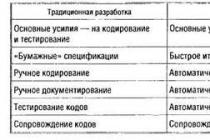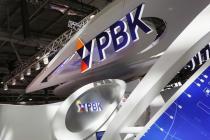Hello dear buyers!
In this publication, we continue to review various purchasing tools from the wonderful book "Purchasing chessboard" by consultants A.T.Kearney. Today we will look at one of these tools , How product composition benchmarking.
Increasing differentiation, reduction life cycle product and the growth of product diversity make sourcing more and more complex. As a result, it is becoming more and more difficult to apply volume consolidation methods or achieve economies of scale. Therefore, the first step in this case will be the use of appropriate tools to bring order into the resulting chaos. Using analysis and benchmarking, it is possible to identify potential improvements that can be realized through the joint efforts of the R&D and production departments.
A sample of competing products is sent to multiple vendors for component analysis. Suppliers provide offers both for the product as a whole and for its components. Combining best deals, the best concept is selected, while the buyer has an understanding of the production costs of suppliers.
Product Composition Benchmarking includes seven steps:
1) coordination of the approach with suppliers: it is necessary to identify new potential suppliers (other than existing ones) based on their portfolio, competencies and abilities;
2) identification of relevant competitive products;
3) preparation of appropriate costing templates;
4) receiving corrected templates from suppliers;
5) evaluation of proposals;
6) definition of potential savings:
Determination of the supplier with the lowest price for each of the products within the existing cost estimate;
Product reconfiguration using the lowest cost components;
Determination of the lowest production costs
7) determination of target costs
result product composition benchmarking is a reliable analysis of compared competitive products.
good example of product composition benchmarking is an example benchmarking of rear-view mirrors at a car manufacturer
An automobile manufacturer decided to benchmark the composition of a product for rear-view mirrors after obtaining the consent of four suppliers (2 existing, 2 new) to participate in this process. The engineering and purchasing team decided to include two products from direct competitors and two products from competitors from low cost countries in the process.
The following components were used for the costing templates: housing, hinge mechanism, adjusting head, hanger, frame, and mirror glass. Parts and materials have been determined for each individual item. Suppliers were asked to determine the cost of key product elements and development services, including overheads. For a better understanding of the benchmarking procedure, a joint meeting was held with suppliers.
A few weeks later, the results were available with corresponding potential savings, optimal functionality and efficient production processes. Minor functional differences between competing products were identified and financially assessed. Negotiations and subsequent Feedback provided to each supplier.
A potential savings of 27% on the entire product was identified, broken down as follows: 5 to 10% for the body, 15 to 25% for the hinge mechanism, 5 to 15% for the frame, 25 to 30% for the mirror glass, from 30 to 35% - for additional indirect costs.
Thus, as the example above shows, product composition benchmarking is a fairly effective procurement tool that allows you to get up to 30% savings.
Business in Russia continues to develop and master new management tools that make it possible to improve the quality of business processes and increase the competitiveness of organizations in the market. Benchmarking is one such tool.
Dear reader! Our articles talk about typical ways to resolve legal issues, but each case is unique.
If you want to know how to solve exactly your problem - contact the online consultant form on the right or call by phone.

It's fast and free!
Modern large enterprises already consider this analysis as an important tool in their development strategies, and small and medium-sized businesses are often not even familiar with the concept of benchmarking and the meaning of this term. But such ignorance does not yet speak of this tool as useless, but quite the opposite, benchmarking can be used to increase the competitiveness of some small businesses.
There are many different definitions of this concept, and in order to fully understand what it contains, you should familiarize yourself with several of them.
The name benchmarking comes from two English words branch (height) and mark (mark).
There are the following definitions of this concept:
- Benchmarking- the process of comparing the company's activities with the world's best organizations that exist in one market segment in order to make appropriate changes and maintain their success.
- Benchmarking- a method of comparative analysis in order to apply the data obtained in practice to improve the efficiency and quality of the company's activities.
- Benchmarking- the process of carefully reviewing the business processes of organizations and their performance, with the aim of comparing their activities with those of industry-leading companies and corporations, in order to use the obtained data to approximate and even overtake enterprises of the best in a single class.
- Benchmarking– search for the best for the enterprise practical methods leading to increased productivity and development.
- Benchmarking- a development standard in which similar business processes should be analyzed and measured.
The phrase "Benchmarking" can mean:
- Be smart and wise enough to recognize that there is always a competitor who is superior in some way.
- To have sufficient wisdom not only to recognize, but also to adopt knowledge and skills from a direct competitor in order to catch up with him, and then get around him.
It is benchmarking today that allows you to quickly enough with minimal cost improve the activities of organizations. By understanding how industry-leading enterprises operate, one can reach the same heights, and possibly even surpass direct competitors. By carefully studying the achievements and mistakes of others, an entrepreneur can form his own strategy of action, which will be as effective as possible for his enterprise.
There is an unspoken rule in benchmarking: “If one entrepreneur came up with and succeeded, then another businessman who applied the same strategy in the same industry is likely to succeed.”
Historical edit

The use of this business tool began in the 80s of the 19th century. Many recognize Xerox as the pioneer or discoverer of this technique, because it, faced with more successful foreign competitors, copied their strategy and managed to outperform them in the market.
To implement their plans, the representatives of the company were faced with the task of answering sequentially two questions:
- Which firm is the leader?
- How did this company operate to be successful?
These questions are the basis of benchmarking today and still remain relevant.
Following Xerox, there were many others who preferred to use this method or similar ones, thereby expanding the scope of benchmarking and improving the power of this tool.
The expansion of this business tool has led to the fact that the search for companies for analysis is no longer limited to consideration of direct competitors, but also affects other companies in the same field of activity or even in another. IN Lately analysis became more and more reduced to the search for answers only to the second question.
Analysis, search and identification of successful strategies of competitors is not all. It is quite a difficult job of a different kind to implement such a course of action in a particular organization.
Main types

There are the following types of benchmarking:
- Interior. An analysis of a particular process within the organization itself that allows the compilation of indicators of processes that are similar or analogous.
- Competitive. It is a process of comparing the main characteristics of an organization and comparing these parameters with those of competitive organizations, in order to study specific products, intended capabilities and methods of administering work.
- Functional. Analysis and comparison of certain indicators of companies (two or more) with the same business data of an enterprise that is the best and operates in identical conditions.
- General. Is a comparison of the key indicators of production and sales of the company with the key indicators common to a large number competitors doing the same entrepreneurial activity. This type benchmarking allows you to identify the main investment areas.
Phases
The process itself competitive analysis may consist of 4 main phases, each of which includes some steps.
Phase #1 - Preparation
- The first step is to determine the object of the competitive analysis process. The value and level of relevance of an object intended to perform the tasks and main functions of the organization is measured and studied. IN this process areas of significant difficulty are identified, bottlenecks are probed, and areas of particular interest are identified.
- Thresholds are set in order to derive a score of success. The selected objects will be further considered depending on some of the most important aspects of the activity with the help of financial units. These aspects may include: costs, time, quality level, etc.
- To conduct the most accurate and capacious analysis, additional informational resources such as: fairs, seminars, reports, business plans, surveys target audience, supplier surveys, exchange processes, inspection production capacity, reference data, chambers of commerce, information in the media, literature, etc.
- Search for the main enterprises for comparative analysis. The selection of such organizations should be carried out not only within their market area. Other branches of activity may offer the most decisive and innovative methods suitable for companies engaged in completely different activities. An enterprise that is not a direct competitor is much more willing to provide more complete information for a more detailed comparison and analysis.
Phase #2 - Analysis
- Based on the values and factors of the organization’s work selected at the first stage, the most inefficient processes, services, products and technologies, performance are determined. own enterprise and reasons for this inefficiency.
- Directions are chosen that allow more effective organization of these processes and technologies. We will have to look for an answer to the question of why competing enterprises are better in this area.
Phase #3 - Implementation
- On this stage it is necessary to determine the goals of the proposed changes and strategies for their implementation. A detailed discussion of the expected results is carried out, a full awareness of the need for change and the exact goals of the organization's work are established, taking into account the introduction of new standards and forms of activity.
- Compilation in progress detailed plan action, calculation of the resources spent on such a reorganization, the persons responsible for changes at each level are announced, a reorganization calendar is developed and the results of such activities are forecasted.
- Implementation of all proposed changes according to the plan and calendar.
- Changes are monitored at every stage of change, which is designed to compare the effectiveness of similar innovations. It also checks compliance with the planned restructuring plan and compliance with the target dates.
Phase #4 Repetition
Effective market methods and processes are constantly evolving and subject to major changes, what was yesterday the most innovative technique is rapidly becoming the standard. That is why, in the fourth stage, you should connect continuous process improving the performance of the organization. Well, in order to make work in this direction as simple as possible, you should use the documentation of benchmarking experience in as much detail as possible.

Examples of successful benchmarking
Ford

A good example of the use of such analysis can be found in the history of Ford. Benchmarking was carried out by its specialists in the 90s, when the company's position on the market was seriously shaken. In the course of this analysis, studies of car models were carried out, the number of which exceeded 50.
These studies were conducted in order to clarify the advantages and, accordingly, the disadvantages of each. Based on this analysis, the parameters the best car, which would allow to achieve the performance of competitors' companies and even surpass them.
The result of this company was the car model Taurus, which became the car of the year. Subsequently, the model lost its position due to the fact that improvements began to be made that deviate it from the original development concept based on the analysis of competitive models.
Nokia

This company has long been recognized international organization busy creating mobile devices and services. Nokia uses benchmarking to maintain its position in the market and develop by keeping track of time and progress in all areas of its activities (logistics, research, development, partner relations, people).
GIA

This company is a consulting firm that is engaged in market research, identifying profitable strategies and providing various types of services that allow companies to establish business processes. GIA constantly produces various benchmarking seminars. A typical project of this company includes 2 thematic seminars, where various business and analysis issues can be discussed.
Each seminar can be devoted to the following topics:
- Economic improvements based on examples.
- Learning how to run a profitable business based on the experience of competitors.
- Exchange of main strategies and ideas between competent specialists from various areas entrepreneurial activity.
- Training based on the mistakes made by other companies, as an opportunity to avoid wrong and unnecessary financial expenses in your own work.

What is compared in the benchmarking process?
Competitive analysis is not a highly specialized analysis that is limited to products or core business processes. Relying on past experience In these studies, it can be said that the campaigns have shown incredible originality and ingenuity in the selection of the main factors considered in the benchmarking process.
But with all this, one should not get carried away and forget that the essence of the analysis is to identify the reasons for the effectiveness of competitors. If the analysis begins with a general collection of information, then it should end with a clarification of the methodology of work. The result of the work should be the so-called implementation tool, which is a factor leading the company to high efficiency in the required area.
Benchmarking- a reliable method that allows you to improve business activities by studying the experience of other companies existing in the global market and in a particular area. This analysis becomes the strongest tool that increases the efficiency of companies and allows you to implement best practices that lead to development and profit.
Hello! Today we in simple terms We will tell you what benchmarking is and how this tool is useful for business.
At present, in any field of activity has taken on a global scale. The leaders of many companies understand that it is necessary to comprehensively study the positive experience of competitors in order to predict their own successful future. To keep up with more successful competitors and apply benchmarking.
What is benchmarking in simple words
The term "benchmarking" is very close to the concept of "market intelligence", but marketing intelligence is the collection of almost confidential information, unlike benchmarking.
Benchmarking is a way to study the activities of competing companies in order to adopt their positive experience and apply data about it in their activities.
The purpose and objectives of benchmarking
The main purpose of benchmarking is to establish how likely a particular activity is to be successful.
To fully cover this concept, it is worth considering in more detail the main tasks of benchmarking:
- Determine how competitive the company is, what are its weaknesses;
- Determine what changes need to be made;
- Develop a plan to improve the company's activities;
- Develop new approaches to doing business;
- Set long-term goals that are more global than current ones.
Types of benchmarking
Benchmarking can be divided into several types:
- Functional - allows you to compare how individual functions of a particular manufacturer or seller work with more successful sellers, but working in similar conditions;
- General benchmarking - represents comparative analysis indicators of production and sales of goods of one manufacturer, with similar indicators of another, more successful manufacturer;
- Competitive – comparison with competitors who operate at a higher level of the market. For example: a company that works for regional market, selects for comparison a company that has already entered the international level. These data can be considered more important, but they are not easy to obtain;
- Interior - comparison is made between processes within the company that are as close as possible to each other. Data in this case is easy to collect, but the information is quite biased;
- Strategic benchmarking – is a procedure for searching for a new development strategy that will eventually lead the company to achieve the highest level performance. It is he who determines the goals that the company will have to achieve;
- Cost Benchmarking – if carried out correctly, it allows to reduce costs, as well as to determine the factors that affect their formation.
How sources of information use publications, various lists of prize-winners and winners in the "quality" category of various awards, as well as various databases (auditing, consulting).
To conduct benchmarking, they usually create a special working group. The composition of such a group is better to include specialists from different structural divisions companies. This increases the chances of an objective assessment of the information received.
Methods and stages of benchmarking
The benchmarking methodology includes certain steps:
- Selected specific function business of the manufacturer or seller;
- Select the parameters to be compared. It may be one criterion, or it may be a group;
- Information is collected about similar manufacturers or sellers;
- The information received is carefully analyzed;
- A draft of the changes that will be made to this function is being developed;
- Preparations underway business case planned changes;
- Changes are being implemented in practical activities companies;
- The progress of the implemented changes is monitored and a final assessment is given to them.
The result will greatly depend on how well the collection of the necessary information is organized.
What indicators are compared in the benchmarking process
Can be compared:
- Volumes of manufactured products or rendered services;
- Financial efficiency;
- Business processes.
Benchmarking is not industrial espionage
Benchmarking and industrial espionage should not be confused. These are two completely different and dissimilar concepts. Benchmarking compares your products or services with similar ones. There are also situations when competing companies exchange experience at their mutual desire.
In addition, most often, benchmarking uses information that is in the public domain, that is, it can be obtained using surveys, analyzing pricing policy.
The thin line between industrial espionage and research can be called competitive intelligence.
In our country, several companies often unite in order to resist competitors using benchmarking. Examples include the experience of several pharmaceutical companies, which have established the exchange of information among themselves, while blocking access to it to foreign competitors. Or the same cooperation in the banking sector: in order to solve the problem of long queues, a large bank adopts the experience of another bank (increasing the number of ATMs, reducing fees for using online banking, developing automation of many processes).
Disadvantages of Benchmarking
- Search for a benchmarking partner;
- Sometimes consulting services are required;
- If an organization does not have experience in benchmarking, significant costs will be required in the early stages;
- Not always the necessary changes are welcomed by the employees of the organization and accepted by them, although they are aimed at increasing the level of productivity;
- Not all common methods may apply to a particular organization.
How to benchmark a company yourself
There is simply no procedure that would suit any company. Each company develops it itself.
There are only a few tips that you can rely on in the process:
- Select for comparison only those processes or services, the quality of which is unsatisfactory. Comparing indicators with which everything is in order will only entail a waste of time and money;
- Do not select too broad a list of indicators or processes for analysis;
- Prepare the company or enterprise for the fact that changes in activity are planned;
- Gather a group of highly qualified professionals;
- Use the appropriate software to make the process easier.
An example of benchmarking in an enterprise
The example of the automobile company Ford is very indicative. In the 90s of the last century, benchmarking was carried out in order to raise the shaken position of the company in the market. The company's specialists conducted an internal study of a large number of car models to study the benefits of each and identify models that consumers preferred.
For each criterion, the best car in its class was identified, based on this, a strategy was developed to surpass the highest performance.
The result of the analysis was a car that received the title of "Car of the Year". Gradually reached peaks were again lost.
The company's management, in the end, came to the understanding that benchmarking is an ongoing process, it cannot be considered a one-time one.
Summing up, I would like to say that benchmarking allows you to find out why a competing company has achieved significant success in its field of activity, what actions led to a positive result. Analysis of only one of these indicators full view on the activities of the company will not give. Comparisons should be based on similar indicators in similar areas of activity.
Benchmarking is understood as a systematic comparison of organizational processes and performance, carried out on the basis of pre-selected indicators (Fig. 1). The purpose of benchmarking is to reveal the gap between the best of results achieved and those that the company is currently showing in order to develop new standards and/or improve processes.
There are four types of benchmarking.
- Internal - comparison of performance results and applied techniques in different divisions of the company, i.e. in business units.
- Competitive - comparing the performance and performance of the company with the performance and performance of its direct competitors.
- Functional - comparison of indicators and performance of companies from the same industry.
- General - comparing the performance and results of companies from different industries, carried out to find the most effective methods of work.
All types of benchmarking can be beneficial as they allow a company to better understand its strengths and weaknesses to identify problems and possible ways their elimination; they also show norms, set new directions, and generate new ideas designed to improve company performance.
Benchmarking methods vary depending on situational characteristics and/or explanatory factors that will help explain the difference in performance between the companies being compared. Moreover, some of the benchmarking methods reveal expected trends and how the best effective methods work. Other practical issues may also be explored in this analysis.
When to Apply the Model
The choice of the type of benchmarking depends on the goal. Keeping in mind that what is conceived and its implementation in practice usually do not have a 100% match, we can formulate the purpose of benchmarking as follows: it is a method of obtaining an answer to one of the following questions.
- How well are we doing our job?
- Are we doing our job as well as others?
- How can we improve our performance?
The scope of a benchmarking project is determined by the impact that it is likely to have on the company, by how freely you can openly communicate the results obtained with it to everyone. stakeholders to increase the likelihood of success in the implementation of improvement projects, as well as the efforts required to achieve results that play an important role in practice.
How to use the model
Ideally, companies (or any other similar structures) participating in benchmarking should show higher or at least the same results as the company (structure) under study, which in this case is called the target. You can find such companies with the help of experts and through specialized publications. However, due to differences in products, processes, structures, or because of the peculiarities of leadership and management styles, it can sometimes be very difficult to compare companies.
This difficulty can be overcome by using one practical technique. Research shows that it is possible to compare companies in the sample using explanatory factors. Thus, the reliability of delivery of goods to the consumer depends, among other things, on the complexity of the product. Therefore, a number of companies with approximately the same product complexity will have similar indicators for this quality, which makes it possible to form a homogeneous group for benchmarking delivery reliability (Fig. 2 and 3).


The assumptions made about the performance of the target company can be more accurate if benchmarking is applied to an indicator (for example, reliability of delivery) taking into account several explanatory factors.
To conduct benchmarking, you must perform the following (sometimes overlapping) steps.
- Determine the scope of the project.
- Select your benchmarking partner(s).
- Determine the scores, metrics, and method for collecting the required data.
- Gather data.
- Analyze the differences, uncover the facts behind the numbers.
- Present the results of the analysis and discuss their implications for the (new) goals.
- Track the dynamics of the development of the event (monitor) with the help of ongoing benchmarking.
conclusions
Benchmarking is not easy at all. Too often, managers or consultants resort to benchmarking on their own initiative, forgetting to select in advance the necessary indicators or tools for conducting serious detailed analysis and presenting its results. It's hard to argue with the fact that many benchmarking projects fail. Comparing organizational processes and company performance in benchmarking is like comparing dissimilar items like apples and pears. Even if benchmarking is done correctly, significant differences in performance can be explained by the fact that “we are not like them”, and this “alienation syndrome” makes it difficult to use benchmarking as a mechanism to help set the company on a path of change in order to achieve higher results. In addition, the presence of competition may hinder the free exchange of information; sometimes this happens even within the company.
By using explanatory factors, benchmarking helps a company to obtain data for comparison that allows leaders and managers not only to improve performance (actually point out opportunities for improvement), but also to show original and at the same time proven solutions, thanks to which they can cope with very difficult problems. Therefore, we argue that differences between peer group companies should be encouraged rather than trying to exclude "dissimilar" members from the peer group on the grounds that their products or processes are "incomparable" with others.
The market places new demands on companies for their logistics activities, quality of service and their logistics policy. Companies, in order to remain competitive and offer quality services, need to look for ways to improve. Benchmarking is one of those ways.
Benchmarking is a way to improve a company by evaluating and comparing the indicators that characterize its work with those of other companies. Benchmarking appeared in the USA at the end of the twentieth century and is still used as a tool to improve efficiency. various kinds activities. There are several types of benchmarking. But regardless of the type, its main goal remains to improve the work of the company.
Benchmarking studies are carried out periodically. Conducting a one-time study cannot fully reflect all the benefits that benchmarking brings. One of the tasks of benchmarking is to determine the current position of the company in the market, after which changes should be made. After the changes are made, it is necessary to re-investigate and understand how effective decisions taken and how the company's position in the market has changed.
By participating in the benchmarking of the main logistics KPIs, you will be able to:
- compare performance with other companies,
- make decisions to improve the company,
- track the dynamics of the indicators you are interested in,
- get acquainted with the best practices of the industry.
Within the scope of modern business the idea is gradually emerging that it is not the firms themselves that compete, but their supply chains, this explains the increased interest in logistics.
the strongest competitive advantage in the struggle for the buyer should become efficient logistics. Logistics industrial enterprises is to prepare and implement the principles and methods of logistics in its activities.
It becomes obvious that in this case it is necessary to take into account the experience successful businesses inside and outside the industry in which the object of logistics operates - not only foreign, but also domestic, more close to real Russian conditions.
This is a relatively new trend. marketing research, which appeared in the USA in the 70s. XX century., It is customary to call the term "benchmarking". Foreign scientists define benchmarking as " systematic activity aimed at finding, assessing and studying for best examples regardless of their size, business area or geographic location."
There is a slightly different definition: "Benchmarking is the process of systematic and continuous measurement: evaluation internal processes at the enterprise and comparing them with the processes of the world's leading enterprises in order to obtain information that will be useful for improving their own characteristics.
Many new business methods in logistics, marketing, quality management, developed big companies and successful, gradually began to be used by enterprises in other industries. These include 6-sigma (Motorola), JIT (Toyota), Poké Yoka (Matsushita Co), and benchmarking itself (Xerox).
Currently, benchmarking is a promising direction in the development of consulting. At the same time, the role of a consultant is to adapt the experience of leading companies, including those from other industries, to the real business conditions of the client company.
Benchmarking approach leads to significant change decision-making procedures in the field of logistics management. Traditionally similar management decisions were taken on the basis of the results of marketing and logistics research, management intuition in the field of organizing supply chains.
The benchmarking approach in the field of logistics of industrial enterprises involves the discovery, study and use of the useful experience of other firms in solving the problems of the development of logistics systems and chains, familiarity with the applied best practices, which contributes to a more reasonable, balanced acceptance
management decisions in the development of intra-company logistics, thereby increasing the competitiveness of the company.
The subjects of study of benchmarking in logistics include:
1) organization of distribution channels
2) warehousing (including technical equipment of warehouses)
3) logistics management
4) transportation and relations with logistics operators
5) logistics systems management and control over resources at all stages of the production and sales cycle
6) information management in the course of product distribution (including the availability electronic document management, barcoding)
7) the process of formation of logistics costs
8) interaction with suppliers and business partners.
The benchmarking process in logistics can be represented as the following scheme:
1. Determining the range of problems in the functional areas of logistics to be considered from the standpoint of benchmarking.
2. Determination of a set of factors and variables for the analysis of the state of logistics in the enterprise.
3. Selection of a set of enterprises for comparison and use of experience, both in the industry to which the logistics object belongs, and from other industries. In parallel with this, it is necessary to analyze external secondary information related to the use of logistics by other enterprises, the formation of supply chains by them.
4. Collection and analysis of indicators selected for comparison of enterprises according to selected evaluation criteria. At the same time, the information received is classified, systematized, the method of analysis is selected, and the degree of achievement of the goal and the totality of factors that determine the result are assessed.
5. Comparison of the obtained results with own indicators in order to determine possible areas for improvement.
6. Development of an action plan to improve the state of logistics based on the information received.
7. Implementation and subsequent monitoring.
It is obvious that such a benchmarking scheme should be periodically carried out again, since practice shows that the process of improvement is unlimited, since science and management are developing dynamically, and this causes corresponding changes in the application of logistics approaches and methods in the best enterprises.
Of great importance when conducting benchmarking in logistics is the compilation of a "collective", in fact, "ideal" image of a reference company for orientation, the state of the supply chains to which one should strive.
The most important principle of benchmarking is the similarity of the logistics business processes of the logistics object with the compared enterprises, which determines the possibility of applying their experience.
The problem that needs to be addressed in the course of benchmarking is the need to adapt the results of the study to the characteristics of the company.
Considerable importance in the future should be given to the mutual exchange of information between interested enterprises, including those from different industries through conferences on various applied issues of logistics and marketing. The sources of information for benchmarking in the field of logistics are information posted on the Internet, visits to thematic exhibitions, personal contacts with suppliers, consumers, competitors, representatives of leading companies in other industries, economic periodicals, data from professional associations, industry consultants.
According to a number of researchers, for example, Y.K. Shetty, the main source of information about the market and competitors remains the buyer. In fact, by conducting appropriate marketing research, you can find out the opinion of consumers about the state supply chains and necessary changes in the nature of interaction.
Direct communication between logistics managers of different enterprises provides valuable ideas and knowledge for business, which can lead to the introduction of new forms of commodity circulation, inventory management, modern software products, the use of new logistics methods.
The main benefit of benchmarking lies in the fact that the implementation of logistics and related marketing and production functions becomes more efficient as the best methods and technologies of other enterprises or industries are researched and implemented. This will have a positive effect on reducing costs (especially logistics), will lead to a better satisfaction of customer needs, which will create prerequisites for increasing business profitability, creating useful competition in the market.
In case of absence necessary resources to conduct benchmarking on your own, it is advisable to involve third-party organizations - consulting firms in the field of management and, in particular, logistics consulting. There are not enough of them yet, but it is obvious that this unfilled market niche intellectual services for business will start filling up soon.














